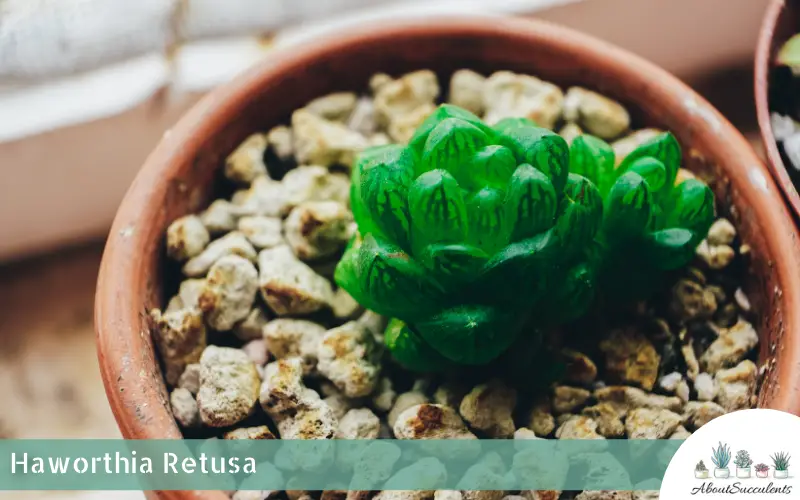
Haworthia retusa is a succulent that has a majestic appearance because of its lime green leaves which bend back and give it a star-like shape. This is the reason Haworthia retusa is also called Star Cactus. It is also a member of the Asphodelaceae family and is sometimes called Aloe Retusa.
The leaves of Haworthia retusa have a smooth surface and appear translucent with signs of veining. There are no tubercles or spines to be found on the leaves which can grow up to 3.2-inches (8cm) long and 0.8-inches (2cm) wide. Star Cactus’ leaves are thick and fleshy and can store water.
The rosettes are composed of 10 to 15 leaves that measure 5.9-inches (15cm) across. Flowers have a whitish color with a tubular shape and bloom sometime in late spring to summer.
Haworthia retusa can grow up to a height of 3-inches (7.5cm) and 6-inches (15cm) wide. The succulent is native to South Africa.
General Information:
Also known as: Star Cactus, Aloe retusa
Plant Family: Asphodelacea
Origin: South Africa
Height: 3-inches (7.5cm)
Exposure: Partial to full sunlight for 3 to 5 hours
Water Needs: Frequent watering schedule during the summer months; very little to no watering in the winter or cold season.
Soil Type: Cactus soil mixed with sand
Soil pH: Acidic (6.1 to 6.5 pH)
How to Grow and Care for Haworthia Retusa
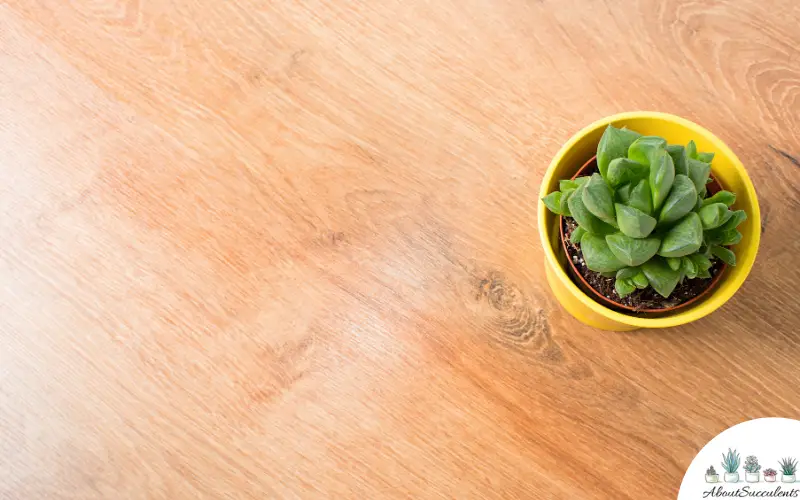
Haworthia retusa is a slow-growing succulent that is easy to maintain provided you follow proper guidelines for sunlight, watering, and fertilization.
As an indoor succulent, Star Cactus would be an ideal addition to your window sill or veranda. If grown outdoors, Haworthia retusa would wonderfully adorn a small succulent garden or a rock garden with some cacti.
Star Cactus is not a cold-hardy succulent. If you live in a region where the temperatures drop below 20° F (-6.7° C), it is recommended to place the plant in a container and brought indoors.
1. Sunlight
Haworthia retusa can thrive with full to partial sun. If grown outdoors, place Star Cactus in an area that receives 3 to 5 hours of sunlight. Regular sun exposure will cause the leaves to develop a nice, reddish color and maintain thickness. If the succulent is grown indoors, place it near a window that receives sunlight.
2. Watering
Haworthia retusa is susceptible to the dangers of overwatering. To keep the succulent healthy, give it water only when the soil is dry to the touch.
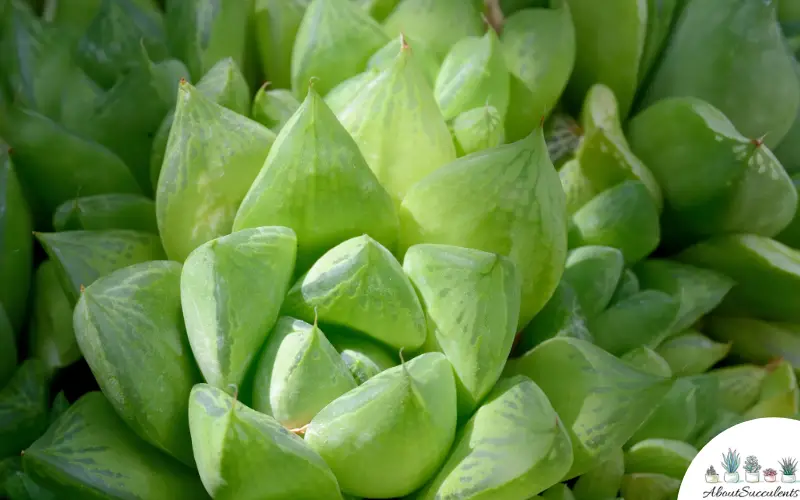
In the summer months, keep the soil moist but not visibly wet. During the colder months, the soil will remain moist much longer and Star Cactus will not require as much water.
Overwatering can lead to root rot. If the rotting is not contained, the fungal infection will spread throughout the plant.
3. Fertilization
Haworthia retusa should only receive fertilizer that is diluted with water to reduce its strength by 50%. Star Cactus is best fertilized only once during the growing season.
4. Pot and Soil
Star Cactus is often used as a decorative succulent plant. In some cases, growers of Haworthia retusa plant the succulent in little teacups or baby shoes. The best container for Star Cactus is a pot that measures 3.9-inches to 5.9-inches (10cm to 15cm) and has good drainage.
Fill the pot with well-draining soil such as cactus and add sand to further improve the level of drainage.
How to Propagate Haworthia Retusa
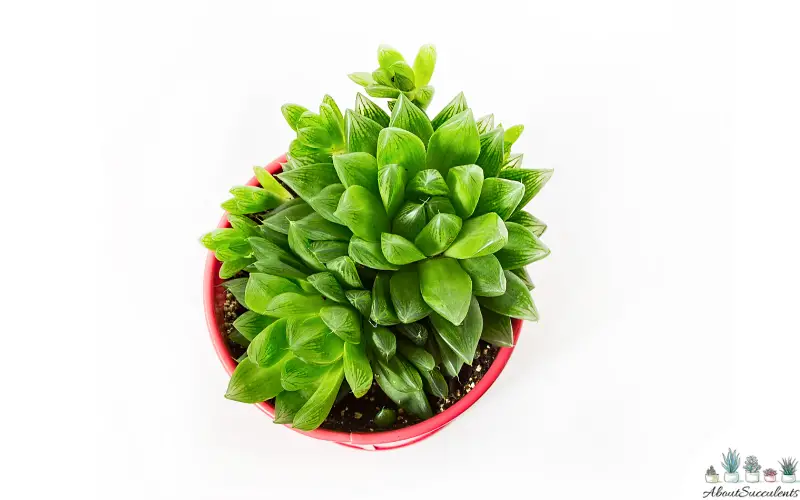
Haworthia retusa is an eye-catching succulent that will make for a good topic of conversation. Succulent growers like to propagate Star Cactus to add more color and shape to their miniature garden. Haworthia retusa can be propagated through the use of cuttings and offsets.
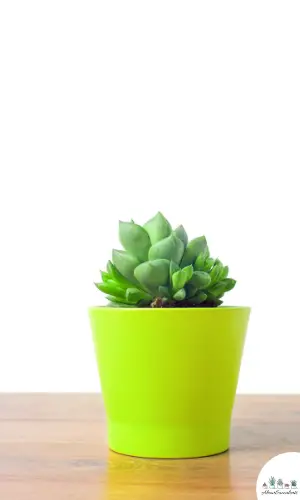
1. Cuttings Method
Step 1: Remove the cuttings from the main plant by using a sharpened and sterilized knife or a pair of garden shears.
Step 2: Place the cuttings on the ground and under a shaded area. Wait for hard calluses to develop. This may take a few days.
Step 3: When the calluses are hard enough and prominent, insert the cut end of the stem into a pot of well-draining soil.
Step 4: Give the soil water only when it has dried out completely.
2. Offsets Method
Step 1: Haworthia retusa produces small offsets that sprout around the base of the main plant. Pull the offsets gently.
Step 2: Allow 1 to 2 days for the offsets to dry completely.
Step 3: Replant the offsets in well-draining soil.
Frequently Asked Questions
Is Haworthia Retusa Toxic for Cats and Dogs?
Haworthia retusa is not included in the list of toxic plants for cats and dogs that can be seen on the website of the American Society for the Prevention of Cruelty to Animals (ASPCA).
Why is my Haworthia Retusa Succulent Dying?
Haworthia retusa is a resilient succulent. Root rotting due to overwatering is the only problem that you will have with Star Cactus.
A sign that the roots of the succulent are starting to rot is the color of the leaves. If the leaves are turning yellow, you may be overwatering the soil.
Wait for the soil to run completely dry of moisture. If the leaves start to turn back to green, then overwatering was the problem.
Does Haworthia Retusa Produce Flowers?
Haworthia retusa produces 20 to 30 tiny flowers that have a whitish color and greenish-brown veins. The flowers bloom in the late spring or summertime but they do not last long. It is possible for Star Cactus to blossom more than once in a given year.
Last Updated on June 12, 2022 by Sofia Lara